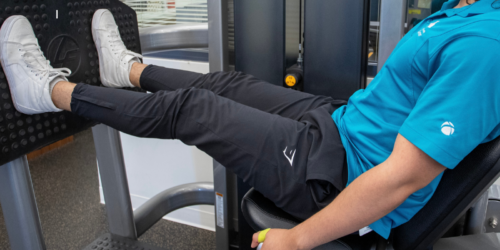When children and adolescents participate in the recommended level of physical activity — at least 60 minutes daily — multiple health benefits occur. Most youths, however, do not engage in recommended levels of physical activity. Regular physical activity builds healthy bones and muscles, improves muscular strength and endurance, reduces the risk for developing chronic disease risk factors, improves self-esteem, and reduces stress and anxiety. Beyond these known health effects, physical activity may also have beneficial influences on academic performance.
Age-Appropriate Physical Activity
Children and adolescents engage in different types of physical activity. What they do depends on their age and access to programs and equipment in their schools, playgrounds, parks, and communities. Elementary school-age children should engage in free play. They should run and play chasing games such as tag, jump rope and play age-appropriate sports and activities that align with their stage of fundamental motor skills development. For adolescents, the development of complex motor skills enables them to engage in active recreation. Such as kayaking, mountain/trail biking, rollerblading. Adolescents should also participate in resistance exercises. For example weights or weight machines, individual sports (e.g., running, bicycling), and team sports (e.g., basketball, baseball, football, soccer). But only 17.1 percent of U.S. high school students meet current recommendations for physical activity.
Physical Activity and the Brain
There is a growing body of research that focuses on the association between both school-based and out-of-school physical activity. This includes physical education and academic performance. Studies suggest that physical activity may have an impact on academic performance through a variety of direct and indirect physiological, cognitive, emotional, and learning mechanisms. Research on brain development indicates that cognitive development occurs together with motor ability. Studies show that physical activity can be related to many different aspects of academic performance, including cognitive skills and attitudes, academic behaviors, and academic achievement.
Cognitive skills and attitudes include both basic cognitive abilities, such as executive functioning, attention, memory, verbal comprehension, and information processing, as well as attitudes and beliefs that influence academic performance, such as motivation, self-concept, satisfaction, and school connectedness. Academic behaviors include a range that may have an impact on students’ academic performance, such as on-task time management, organization, planning, attendance, and impulse control. Academic achievement includes standardized test scores (such as the Florida Standard Assessment, and previously the Florida Comprehensive Assessment Test) in subject areas such as reading, math, and language arts; GPAs; classroom test scores; and other formal assessments.
In a comprehensive review by the CDC in 2013, researchers reported that increasing time during the school day for physical activity does not appear to take away from academic performance. Findings showed that for younger children recess was associated with improvements in attention, concentration, and/or on-task classroom behavior. Whereas, the GPA for older students was positively associated with extracurricular physical activity. Two studies also examined the association between extracurricular activities and dropout rates. Findings demonstrated that participation was linked to decreased high school dropout rates.
Previous collaborative studies performed at the University of Miami in partnership with the Osceola School District showed that over a two-year period, children attending intervention schools that received increased physical activity were significantly more likely to have higher FCAT math scores than were children in the control schools, regardless of ethnic background. Although it was not statistically significant, a similar trend was found for FCAT reading scores. Similarly, weight decreases were noted in the intervention schools compared with the control school. These findings indicate that school-based interventions targeting obesity prevention via increased physical activity can have indirect positive effects. On academic performance among low-income children, who are at high risk for both obesity and poor academic achievement.
The Recommendations
We are fortunate to live in an area where we can enjoy the outdoors year round. Don’t be afraid to try out new activities on the weekends together as a family. If parents have a positive attitude about the benefits of being physically active, their children most likely will too. Even if a child is not inclined to participate in competitive sports, it does not mean they can’t enjoy being physically active. Whether in or out-of-school recreation programs or with friends and family in the evening and on weekends. For students who do not get any physical activity during the school day via recess or physical education class. Perhaps allow them a 30-60 minute physical activity period when they get home from school before they start homework. This time will actually re-energize them both physically and mentally. Thus, when they sit down to do their homework or study for a test, they are more alert and focused.
Our research among children of all ages showed that regular exercise and activity increase physical and cardiovascular health. It can also improve sleep, reduce stress, depression, and anxiety. Additionally, it can increase attention, learning, school performance, and minimize illness. All while maintaining a healthy weight. When combined with correct nutrition choices, the outcome is a happy and healthy child. What more could a parent ask for?
Sarah E. Messiah, Ph.D., MPH, is a research associate professor of pediatrics and co-director of the Division of Community-Based Research and Training at the Mailman Center for Child Development at the University of Miami Miller School of Medicine. For more information, visit UHealthSystem.com/patients/pediatrics.





